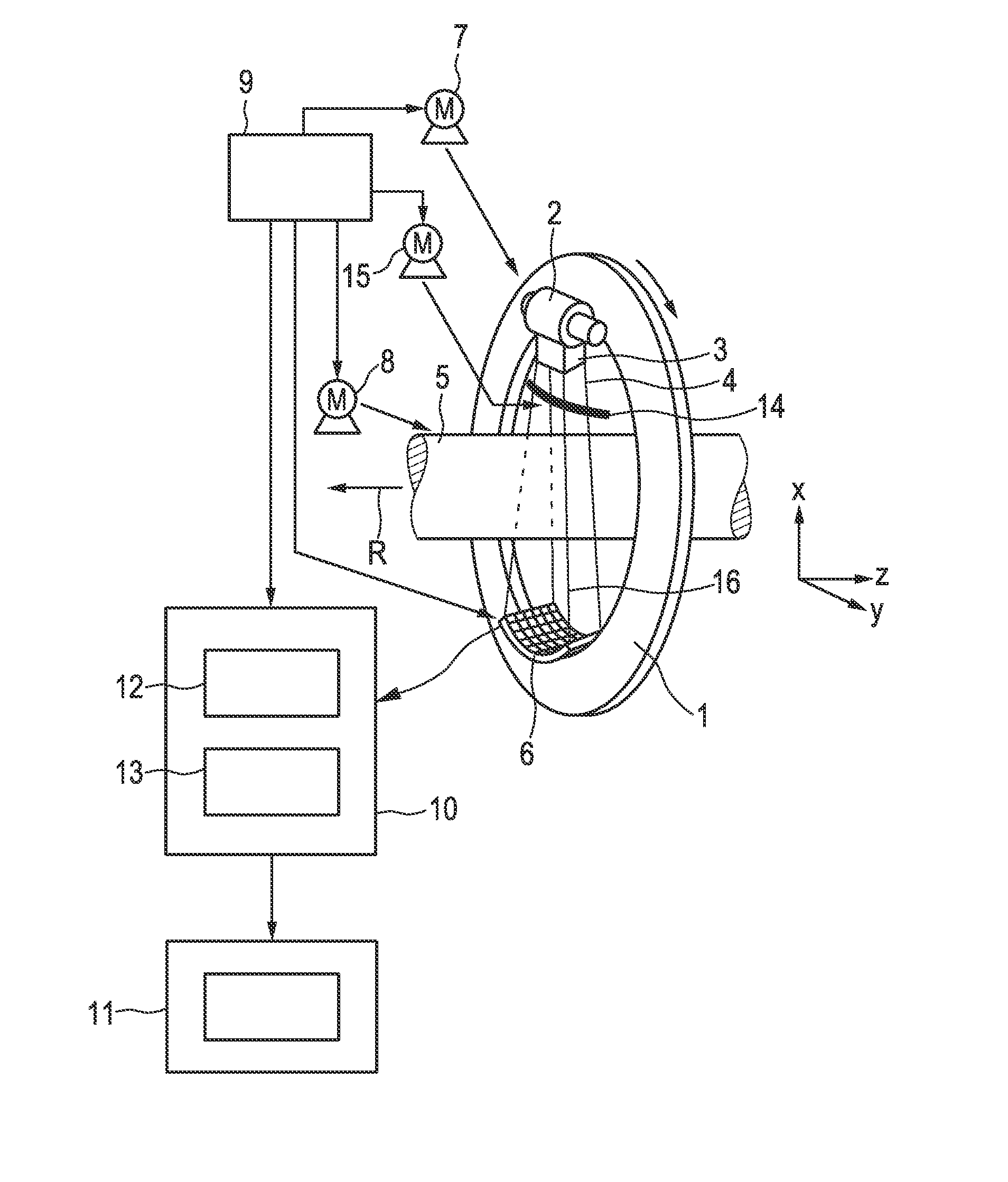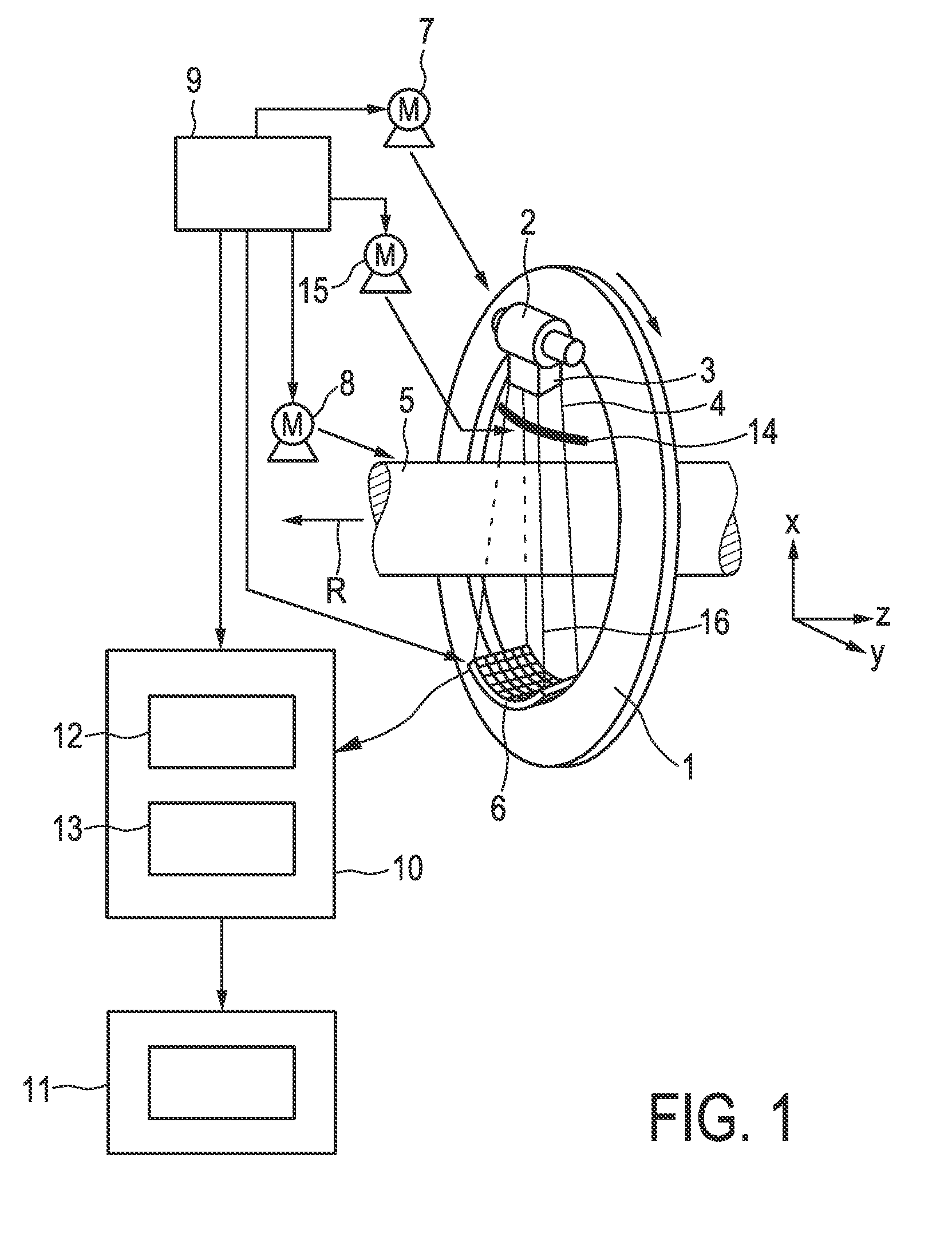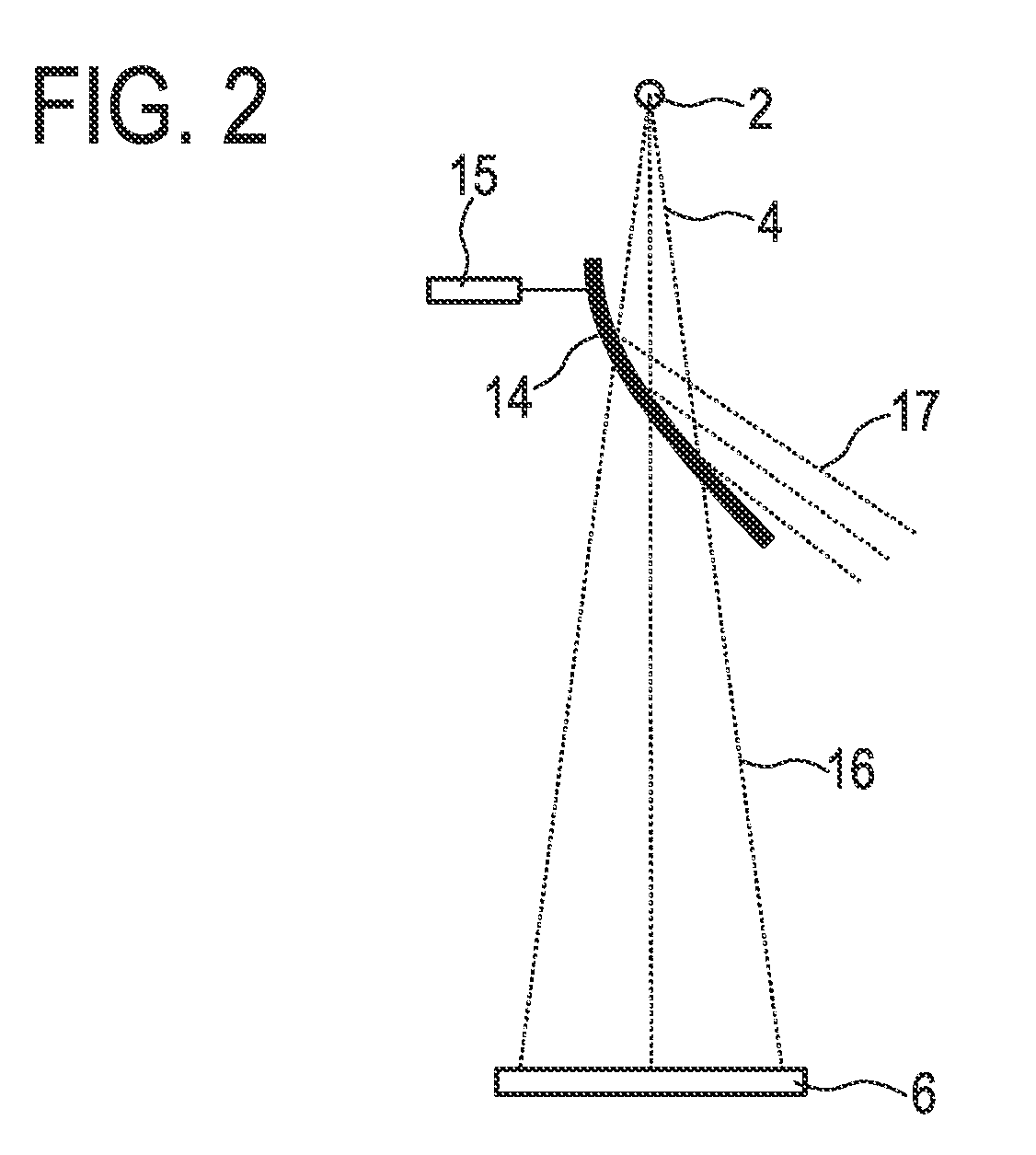Medical X-ray examination apparatus and method for k-edge imaging
a k-edge imaging and x-ray technology, applied in the field of medical x-ray examination apparatus, can solve the problems general inconvenient use of monochromatic sources in clinical applications, and achieve the effect of high count-rate capabilities
- Summary
- Abstract
- Description
- Claims
- Application Information
AI Technical Summary
Benefits of technology
Problems solved by technology
Method used
Image
Examples
Embodiment Construction
[0048]FIG. 1 shows a first embodiment of a medical X-ray examination apparatus according to the present invention, in particular a CT imaging system. The CT imaging system shown in FIG. 1 includes a gantry 1 which is capable of rotation about an axis of rotation R which extends parallel to the z direction. The radiation source 2, in particular a (conventional) polychromatic X-ray tube for emitting a broad energy spectrum of X-rays, is mounted on the gantry 1. The X-ray tube 2 is provided with a collimator device 3 which forms a conical radiation beam 4 from the radiation produced by the X-ray tube 2. The radiation traverses an object (not shown), such as a patient, in a region of interest in a cylindrical examination zone 5. After having traversed the examination zone 5, the X-ray beam 4 is incident on an X-ray detector unit 6, in this embodiment a two-dimensional detector, which is mounted on the gantry 1.
[0049]The gantry 1 is driven at a preferably constant but adjustable angular ...
PUM
 Login to View More
Login to View More Abstract
Description
Claims
Application Information
 Login to View More
Login to View More - R&D
- Intellectual Property
- Life Sciences
- Materials
- Tech Scout
- Unparalleled Data Quality
- Higher Quality Content
- 60% Fewer Hallucinations
Browse by: Latest US Patents, China's latest patents, Technical Efficacy Thesaurus, Application Domain, Technology Topic, Popular Technical Reports.
© 2025 PatSnap. All rights reserved.Legal|Privacy policy|Modern Slavery Act Transparency Statement|Sitemap|About US| Contact US: help@patsnap.com



